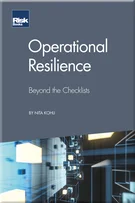Advanced statistical analysis of large-scale Web-based data
Wienke Strathern, Raji Ghawi, Jürgen Pfeffer
Foreword
Introduction
Digitalisation and transformation in economics and finance
Big data for policymaking in economics and finance: the potential and challenges
Quality matters: for insightful quality advice, get to know your big data
Statistics and machine learning: variations on a theme
Advanced statistical analysis of large-scale Web-based data
Text analysis
Prudential stress testing in financial networks
Data visualization: developing capabilities to make decisions and communicate
Data science in economics and finance: tools, infrastructure and challenges
Data science and machine learning for a data-driven central bank
Large-scale commercial data for economic analysis
Artificial intelligence and data are transforming the modern newsroom: a Bloomberg case study
Implementing big data solutions
A borderless market for digital data
Legal/ethical aspects and privacy: enabling free data flows
Assessing the trustworthiness of artificial intelligence
“Big tech”, journalism and the future of knowledge
People leave millions of digital traces in the big data ecosystem. This ecosystem is a huge network with millions of daily personal transactions. And each of these transactions leaves traces that may be compiled into comprehensive information about individual and group behaviour (Lazer et al 2009, 2020). The capacity to collect huge amounts of data transforms the way people and organisations work and behave; hence, the market starts to react faster and increasingly anticipates traditional or other data sources. Data-driven computational economics capture changes in market, attitude and consumer behaviour over time and in real time. The quantitative techniques of machine learning have been applied to demonstrate a shift from a discretionary to a quantitative investment style (Kolanovic and Krishnamachari 2017). An increasing share of human interaction, communication and culture is recorded as digital text. Text is used as an input to economic research. Statistical methods and deep learning methods are applied to digital texts, as such data provides a rich repository of information about economic and social activity (Gentzkow et al 2019; Gentzkow and Shapiro 2010). More interesting
Copyright Infopro Digital Limited. All rights reserved.
As outlined in our terms and conditions, https://www.infopro-digital.com/terms-and-conditions/subscriptions/ (point 2.4), printing is limited to a single copy.
If you would like to purchase additional rights please email info@risk.net
Copyright Infopro Digital Limited. All rights reserved.
You may share this content using our article tools. As outlined in our terms and conditions, https://www.infopro-digital.com/terms-and-conditions/subscriptions/ (clause 2.4), an Authorised User may only make one copy of the materials for their own personal use. You must also comply with the restrictions in clause 2.5.
If you would like to purchase additional rights please email info@risk.net







